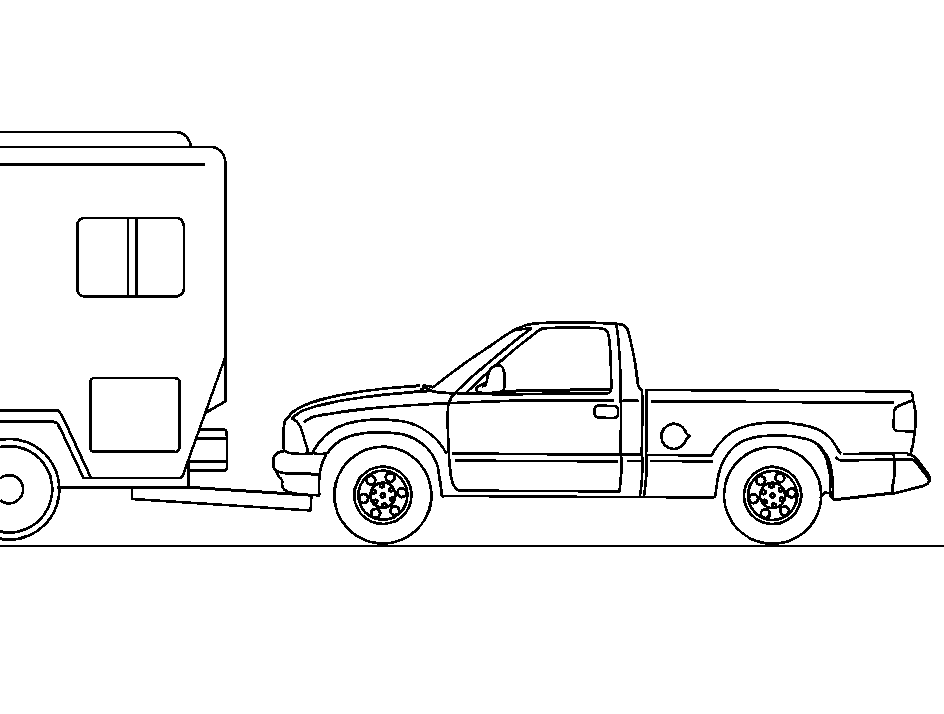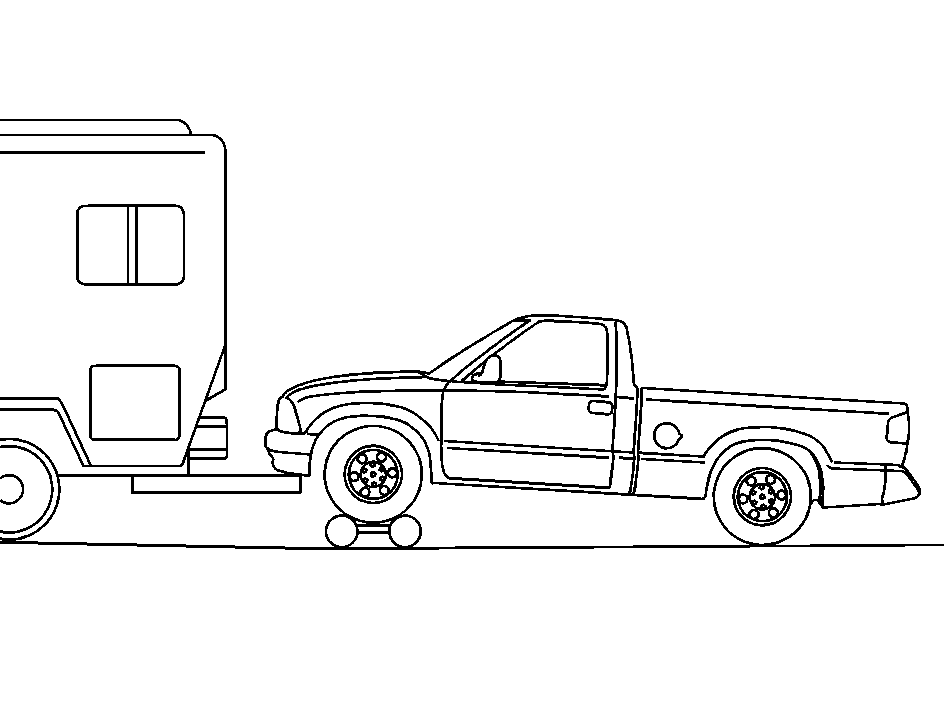Recreational vehicle towing means towing your vehicle behind another vehicle - such as behind a motorhome. The two most common types of recreational vehicle towing are known as "dinghy towing" (towing your vehicle with all four wheels on the ground) and "dolly towing" (towing your vehicle with two wheels on the ground and two wheels up on a device known as a "dolly").
With the proper preparation and equipment, many vehicles can be towed in these ways. See Dinghy Towing and Dolly Towing, following.
Here are some important things to consider before you do recreational vehicle towing:
| • | What's the towing capacity of the towing vehicle? Be sure you read the tow vehicle manufacturer's recommendations. |
| • | How far will you tow? Some vehicles have restrictions on how far and how long they can tow. |
| • | Do you have the proper towing equipment? See your dealer or trailering professional for additional advice and equipment recommendations. |
| • | Is your vehicle ready to be towed? Just as you would prepare your vehicle for a long trip, you'll want to make sure your vehicle is prepared to be towed. See Before Leaving on a Long Trip . |
Dinghy Towing
Two-Wheel Drive Vehicles Only

Notice: If the vehicle is towed with all four wheels on the ground, the drivetrain components could be damaged. The repairs would not be covered by the vehicle warranty. Do not tow the vehicle with all four wheels on the ground.
Your two-wheel-drive vehicle should not be towed with all four wheels on the ground. Your transmission has no provision for internal lubrication while being towed. To properly to your vehicle, it should be placed on a platform trailer with all four wheels off the ground. Towing with all four wheels on the ground should be avoided.
In rare cases when it's unavoidable and your vehicle must be towed with all four wheels on the ground, the propeller shaft to axle yoke orientation should be marked and the propeller shaft removed following the applicable service manual removal/installation procedure. See Service Publications Ordering Information .
Dust or dirt can enter the back of the transmission through the opening created by removing the propeller shaft if proper protection is not provided. Also, check the transmission fluid level before driving the vehicle.
When towing your vehicle, turn the ignition to OFF. To prevent your battery from draining while towing, remove the RDO BATT and CLSTR fuses from the instrument panel fuse block. Be sure to replace the fuse when you reach your destination. See Fuses and Circuit Breakers . Be sure to use the proper towing equipment designed for recreational vehicle towing. Follow the instructions for the towing equipment.
Caution: Shifting a four-wheel-drive vehicle's transfer case into NEUTRAL can cause your vehicle to roll even if the transmission is in PARK (P) for an automatic transmission, or if your vehicle is in gear, for a manual transmission. You or others could be injured. Make sure the parking brake is firmly set before you shift the transfer case to NEUTRAL.
If your vehicle has four-wheel-drive it cannot be dinghy towed. A four-wheel-drive vehicle must be towed by flatbed.
Dolly Towing
Two-Wheel-Drive Vehicles Only

Notice: If the vehicle is towed with all four wheels on the ground, the drivetrain components could be damaged. The repairs would not be covered by the vehicle warranty. Do not tow the vehicle with all four wheels on the ground.
Your two-wheel-drive vehicle should not be towed with two wheels on the ground. Your transmission has no provision for internal lubrication while being towed. To properly tow your vehicle, it should be placed on a platform trailer with all four wheels off the ground. Towing with all four wheels on the ground should be avoided.
In rare cases when it's unavoidable and your vehicle must be towed with two wheels on the ground, the propeller shaft to axle yoke orientation should be marked and the propeller shaft removed following the applicable service manual removal/installation procedure. See Service Publications Ordering Information .
Dust or dirt can enter the back of the transmission through the opening created by removing the propeller shaft if proper protection is not provided. Also, check the transmission fluid level before driving the vehicle.
Use the following steps to dolly tow your vehicle:
- Put the front wheels on a dolly.
- Put the vehicle in PARK (P).
- Set the parking brake and then remove the key.
- Disconnect the propshaft as described above.
- Clamp the steering wheel in a straight-ahead position with a clamping device designed for towing.
- Release the parking brake.
Be sure to use the proper towing equipment designed for recreational vehicle towing. Follow the instructions for the towing equipment.
Caution: Shifting a four-wheel-drive vehicle's transfer case into NEUTRAL can cause your vehicle to roll even if the transmission is in PARK (P) for an automatic transmission, or if your vehicle is in gear, for a manual transmission. You or others could be injured. Make sure the parking brake is firmly set before you shift the transfer case to NEUTRAL.
If your vehicle has four-wheel-drive it cannot be dolly towed. A four-wheel-drive vehicle must be towed by flatbed.
